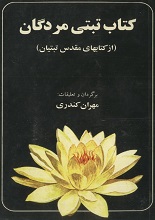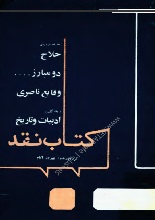Concise Dental Anatomy and Morphology is a book by James Fuller, Gerald E. Denehy and Thomas M. Schulein. Its a rare book.
Introduction
A. The teeth are arranged in upper and lower arches. Those teeth in the upper arch are termed maxillaru, because they are set in the upper jaw, which is the maxilla (Plural – maxillae). The teeth in the lower arch are termed mandibular, because they are located in the lower jaw, which is the mandible. The mandible is themovable member of the two jaws, while the maxilla is stationary.
B. The imaginary vertical line which divides each arch, as well as the body, into two approximately equal halves, is the midline. Strictly speaking, this vertical division is not a one-dimensional line at all, but rather a two-dimensional plane, termed the mid-sagittal lane. However, since most dental authors persist in using the less appropriate term “midline”, for consistency this text will also use it. The two approximately equal portions of each arch divided by the midline are termed rants, since there are four in the entire mouth. They are termed:
maxillary (upper) right.
maxillary (upper) left.
mandibular (lower) right.
mandibular (lower) left.
C. It is important to point out that as one looks directly at the oral cavity (or the body) from the front, the anatomical directions of right and left are reversed. Hence, the right side of the mouth is actually to the left of the viewer, while the left side of the mouth is to the right of the viewer.
D. The manner in which the mandibular teeth contact the maxillary teeth is called occlusion. The term for the process of biting or chewing of food is mastication.
دانلود کتابهای مشابه به زبان پارسی:
Chapters
- Preface
- Unit 1 : Introduction and Nomenclature
- Unit 2: Anatomic and Physiologic Considerations of Form and Function
- Introduction to the Study of Individual Permanent Teeth
- Unit 3: The Permanent Incisors
- Unit 4: The Permanent Canines
- Unit 5: The Permanent Maxillary Premolars
- Unit 6: The Permanent Mandibular Premolars
- Unit 7: The Permanent Maxillary Molars
- Unit 8: The Permanent Mandibular Molars
- Unit 9: Pulp Cavities
- Unit 10: The Deciduous Dentition
- Unit 11: Development of the Teeth and Anomalies
- Pronunciation Guide
- Index
Download Concise Dental Anatomy and Morphology (PDF)

شناسنامه کتاب
Book name: Concise Dental Anatomy and Morphology
Authors: James Fuller, Gerald Denehy and Thomas M. Schulein
Language: English
Format: PDF
Size: 20 MB
Pages: 218
توضیحات کتاب به فارسی: کتابی که همینک در اختیار شماست، یکی از بهترین و معروفترین کتابها برای مطالعه در زمینه آناتومی و مورفولوژی دندان است که به کوشش چمعی از بزرگترین نویسندگان و دندانپزشکان دنیا، به رشته تحریر درآمده است. این کتاب در شمار آثاری است که در دانشگاههای معتبر جهان به دانشجویان رشته دندانپزشکی آموزش داده میشود و بسیار سودمند است که آن را مطالعه بفرمایید.
در کافه کتاب بخوانید:
پاسارگاد
آموزش تایپ ده انگشتی
علل گرایش به مادیگری
دیوان ظهیر فاریابی
آموزش تصویری اکسل
ضرب سکه دنیای باستان
A Part of this Book
At the completion of this unit, the student will be able to:
A. List the appropriate age(s) concerning developmental chronology of the mandibular molars found in the development tables, or select the appropriate age from a list, when given a certain developmental feature. The student should also be able to compare these ages among the mandibular molars.
B. Demonstrate a knowledge of the morphology of each surface of the crown, as well as the root, of each permanent mandibular molar by:
1. describing,
2. selecting the correct information from a list,
3. or interpreting a diagram to identify or name any of the following features:
a. Contours of any surface, or margin of any surface.
b. Structural entities such as grooves, pits, ridges, inclined planes, cusps, fossae, lobes, etc.
c. Height of contour and contact areas.
d. Relative dimensions and shape.
e. Any other surface feature. Furthermore, the student will be able to make comparisons of any of the above features between mandibular molars. C. Make comparisons between permanent mandibular molars and other permanent
teeth, where appropriate, by selecting the correct response from a list.
D. Make comparisons of the general characteristics of the mandibular molars, including function, arch position, distinguishing features, etc., by describing them, or selecting the correct response from a list, when given the tooth (teeth), or a description of the general characteristic(s).
E. Determine from a diagram or description whether a given permanent mandibular molar is first, second, or third, or right or left.
F. Determine the correct universal number or Palmer notation for a given diagram or description of any permanent mandibular molar. G. Demonstrate a knowledge of any of the new terms in this unit, by defining them, or selecting the correct definition, or application thereof, from a list, when given the term, or any of its applications.
H. Demonstrate a knowledge of any of the variations or anomalies in this unit by describing them, or selecting the correct response from a list, when given the particular tooth (teeth), the anomaly, or any of its features or applications. The student is also responsible for any material which was to have been mastered in previous units.
برای دانلود این کتاب، ابتدا باید عضو سایت بشوید.
پس از عضویت، لینک دانلود این کتاب و همهی کتابهای سایت برای شما فعال میشوند.
(قبلا عضو شدهاید؟ وارد شوید)

































